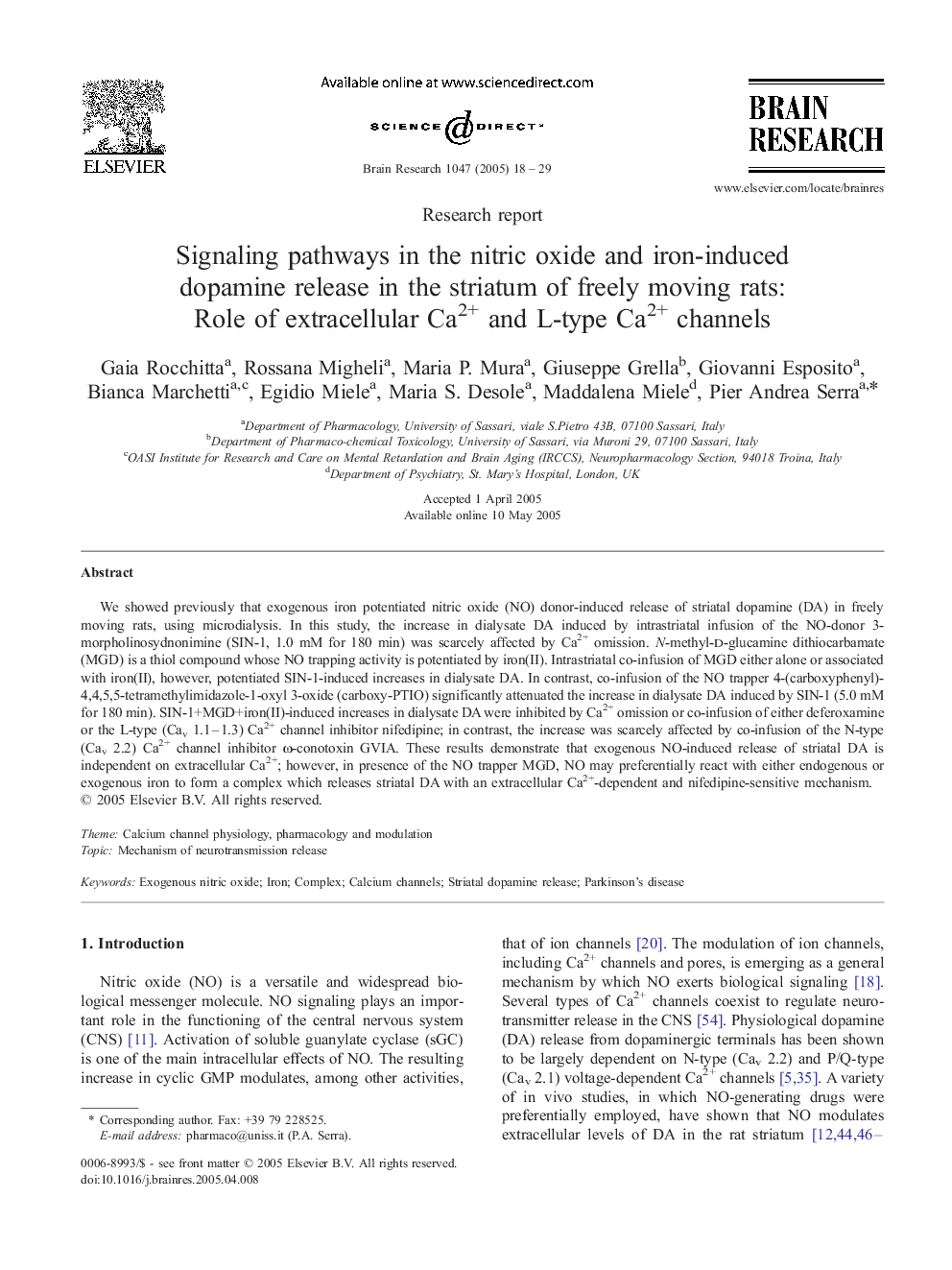| Article ID | Journal | Published Year | Pages | File Type |
|---|---|---|---|---|
| 9416233 | Brain Research | 2005 | 12 Pages |
Abstract
We showed previously that exogenous iron potentiated nitric oxide (NO) donor-induced release of striatal dopamine (DA) in freely moving rats, using microdialysis. In this study, the increase in dialysate DA induced by intrastriatal infusion of the NO-donor 3-morpholinosydnonimine (SIN-1, 1.0 mM for 180 min) was scarcely affected by Ca2+ omission. N-methyl-d-glucamine dithiocarbamate (MGD) is a thiol compound whose NO trapping activity is potentiated by iron(II). Intrastriatal co-infusion of MGD either alone or associated with iron(II), however, potentiated SIN-1-induced increases in dialysate DA. In contrast, co-infusion of the NO trapper 4-(carboxyphenyl)-4,4,5,5-tetramethylimidazole-1-oxyl 3-oxide (carboxy-PTIO) significantly attenuated the increase in dialysate DA induced by SIN-1 (5.0 mM for 180 min). SIN-1+MGD+iron(II)-induced increases in dialysate DA were inhibited by Ca2+ omission or co-infusion of either deferoxamine or the L-type (Cav 1.1-1.3) Ca2+ channel inhibitor nifedipine; in contrast, the increase was scarcely affected by co-infusion of the N-type (Cav 2.2) Ca2+ channel inhibitor Ï-conotoxin GVIA. These results demonstrate that exogenous NO-induced release of striatal DA is independent on extracellular Ca2+; however, in presence of the NO trapper MGD, NO may preferentially react with either endogenous or exogenous iron to form a complex which releases striatal DA with an extracellular Ca2+-dependent and nifedipine-sensitive mechanism.
Keywords
Related Topics
Life Sciences
Neuroscience
Neuroscience (General)
Authors
Gaia Rocchitta, Rossana Migheli, Maria P. Mura, Giuseppe Grella, Giovanni Esposito, Bianca Marchetti, Egidio Miele, Maria S. Desole, Maddalena Miele, Pier Andrea Serra,
